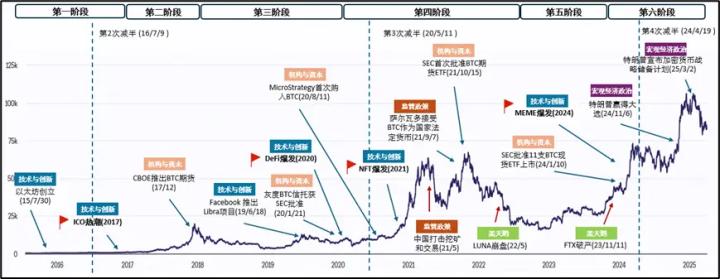Is crypto regulation a retreat from decentralization's ideal, or an inevitable evolution of financial system standardization?
Written by: Buttercup Network, Thejaswini M A
Translated by: Saorise, Foresight News
Translator's Note: The cryptocurrency revolution, once viewed as a "disruption of traditional finance," ultimately did not take the path of violent confrontation, but instead became deeply intertwined with regulatory systems and political consensus, becoming a "tamed revolution". From challenging tradition to seeking permission, from decentralization's ideal to centralized regulatory reality, the absurdity and contradiction of this "revolution" is the core that this article aims to dissect. When rebels bow to the system, is it a game of interests or an inevitable trend of the times?
In 2025, the rebels (cryptocurrency) did not attack banks, but instead applied for a license from the Office of the Comptroller of the Currency (OCC).
[The rest of the translation follows the same professional and accurate approach, maintaining the original meaning while translating into English.]Don't misunderstand, I fully support regulatory clarity and US dollar-backed stablecoins. This is indeed great: crypto innovation now has rules to follow, and the mainstreaming of digital dollars can be considered a true revolution. I wholeheartedly support this. But don't pretend this is some kind of regulatory generosity. Regulators didn't suddenly fall in love with crypto innovation; someone walked into the Treasury and said: "Let's get more of the world to use dollars, just in digital form, and make them buy more US Treasury bonds to back it." Thus, stablecoins transformed from "dangerous crypto stuff" to a "brilliant tool of dollar hegemony".
Every USDC issued means one more Treasury bond sold. 242 billion dollars in stablecoins means hundreds of billions of dollars flowing directly to Washington, boosting global demand for US Treasury bonds. Every cross-border payment that bypasses the euro or yen, every forex market listing a regulated US stablecoin, is another "franchise" of the US monetary empire.
The GENIUS Act is the most sophisticated foreign policy operation, disguised as domestic financial regulation.
This raises some interesting questions: What happens when the entire crypto ecosystem becomes an appendage of US monetary policy? Are we building a more decentralized financial system, or creating the world's most complex US dollar distribution network? If 99% of stablecoins are pegged to the dollar, and any meaningful innovation requires approval from the US Comptroller of the Currency, have we accidentally turned a revolutionary technology into the ultimate export business of fiat currency? If crypto's rebellious energy is directed towards improving the efficiency of the existing monetary system rather than replacing it, and everyone can make money with faster payment settlements, would anyone really care? These may not be problems, just far from what people initially wanted to solve with this movement.
I've been joking about this, but the truth is, this might actually work. Just like the free banking system of the 1830s evolved into the Federal Reserve System, cryptocurrencies may be moving from their chaotic adolescence towards maturity, becoming a systemically important part of financial infrastructure.
Honestly, for 99.9% of people, they just want to transfer money quickly and at low cost, and don't care about monetary theory or decentralization principles.
Banks are already positioning themselves to become the primary issuers of these new regulated stablecoins. JPMorgan, Bank of America, and Citigroup are reportedly preparing to offer stablecoin services to their clients. The institutions that were supposed to be disrupted by cryptocurrencies have now become the biggest beneficiaries of crypto regulation.
This is not the revolution anyone expected, but perhaps the revolution we ultimately get. Strangely, it's also quite "genius".






